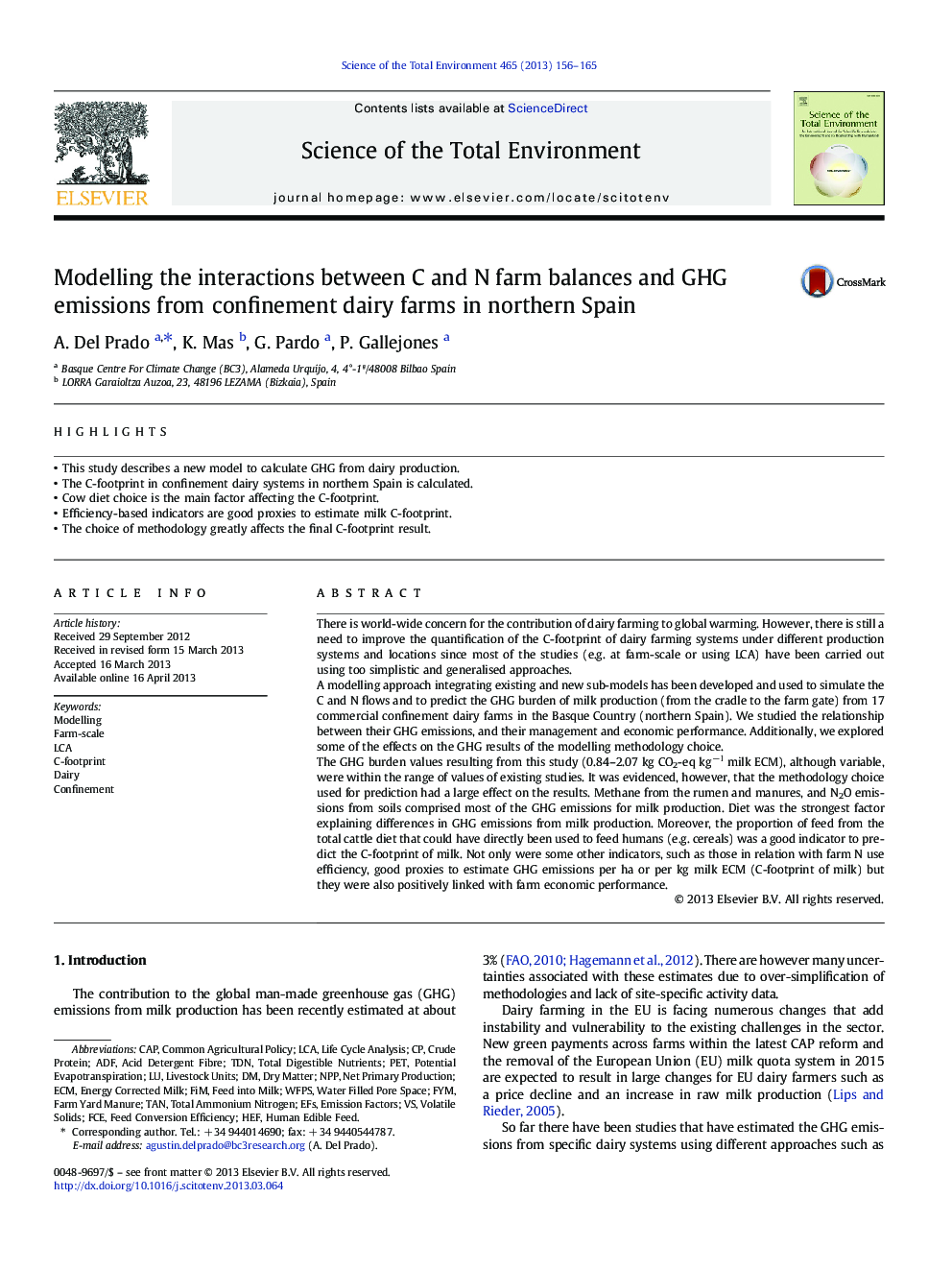| کد مقاله | کد نشریه | سال انتشار | مقاله انگلیسی | نسخه تمام متن |
|---|---|---|---|---|
| 4428689 | 1619797 | 2013 | 10 صفحه PDF | دانلود رایگان |

• This study describes a new model to calculate GHG from dairy production.
• The C-footprint in confinement dairy systems in northern Spain is calculated.
• Cow diet choice is the main factor affecting the C-footprint.
• Efficiency-based indicators are good proxies to estimate milk C-footprint.
• The choice of methodology greatly affects the final C-footprint result.
There is world-wide concern for the contribution of dairy farming to global warming. However, there is still a need to improve the quantification of the C-footprint of dairy farming systems under different production systems and locations since most of the studies (e.g. at farm-scale or using LCA) have been carried out using too simplistic and generalised approaches.A modelling approach integrating existing and new sub-models has been developed and used to simulate the C and N flows and to predict the GHG burden of milk production (from the cradle to the farm gate) from 17 commercial confinement dairy farms in the Basque Country (northern Spain). We studied the relationship between their GHG emissions, and their management and economic performance. Additionally, we explored some of the effects on the GHG results of the modelling methodology choice.The GHG burden values resulting from this study (0.84–2.07 kg CO2-eq kg− l milk ECM), although variable, were within the range of values of existing studies. It was evidenced, however, that the methodology choice used for prediction had a large effect on the results. Methane from the rumen and manures, and N2O emissions from soils comprised most of the GHG emissions for milk production. Diet was the strongest factor explaining differences in GHG emissions from milk production. Moreover, the proportion of feed from the total cattle diet that could have directly been used to feed humans (e.g. cereals) was a good indicator to predict the C-footprint of milk. Not only were some other indicators, such as those in relation with farm N use efficiency, good proxies to estimate GHG emissions per ha or per kg milk ECM (C-footprint of milk) but they were also positively linked with farm economic performance.
Journal: Science of The Total Environment - Volume 465, 1 November 2013, Pages 156–165